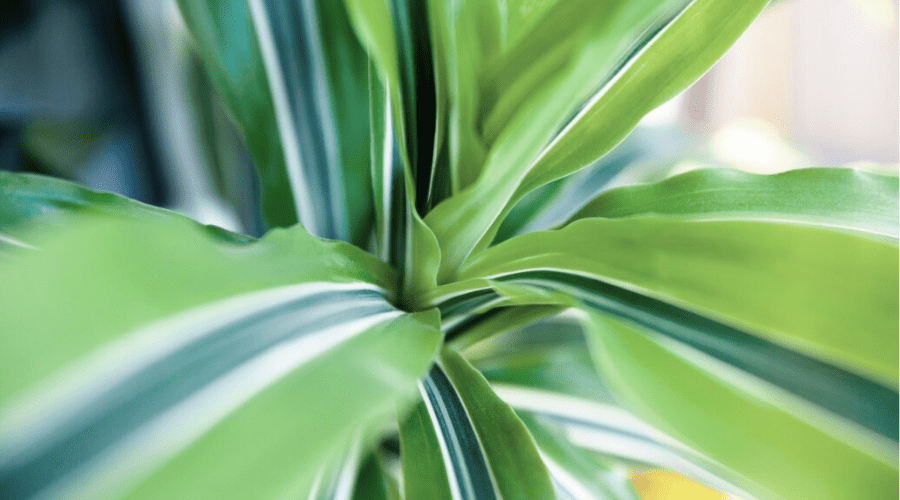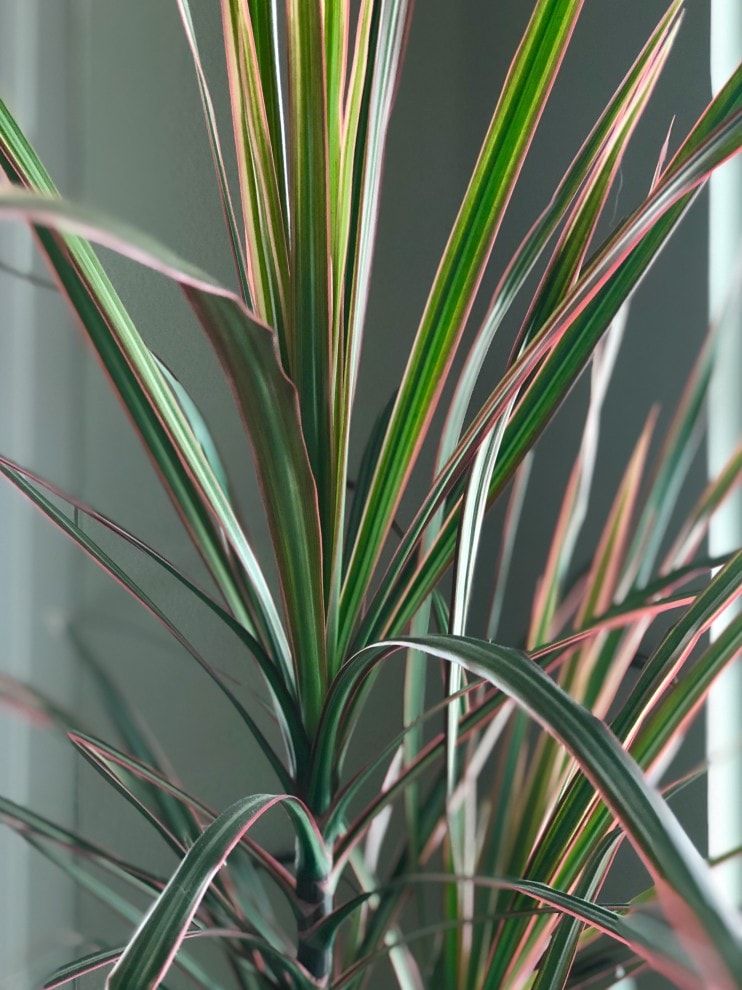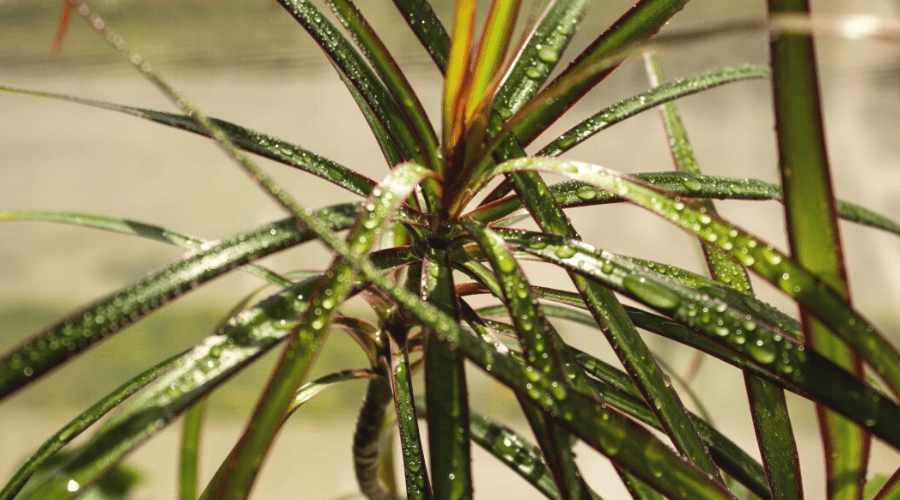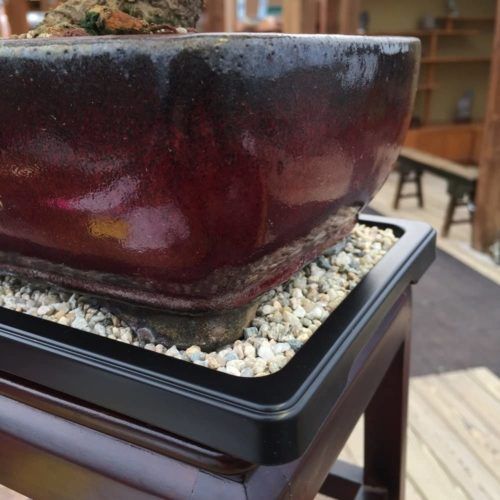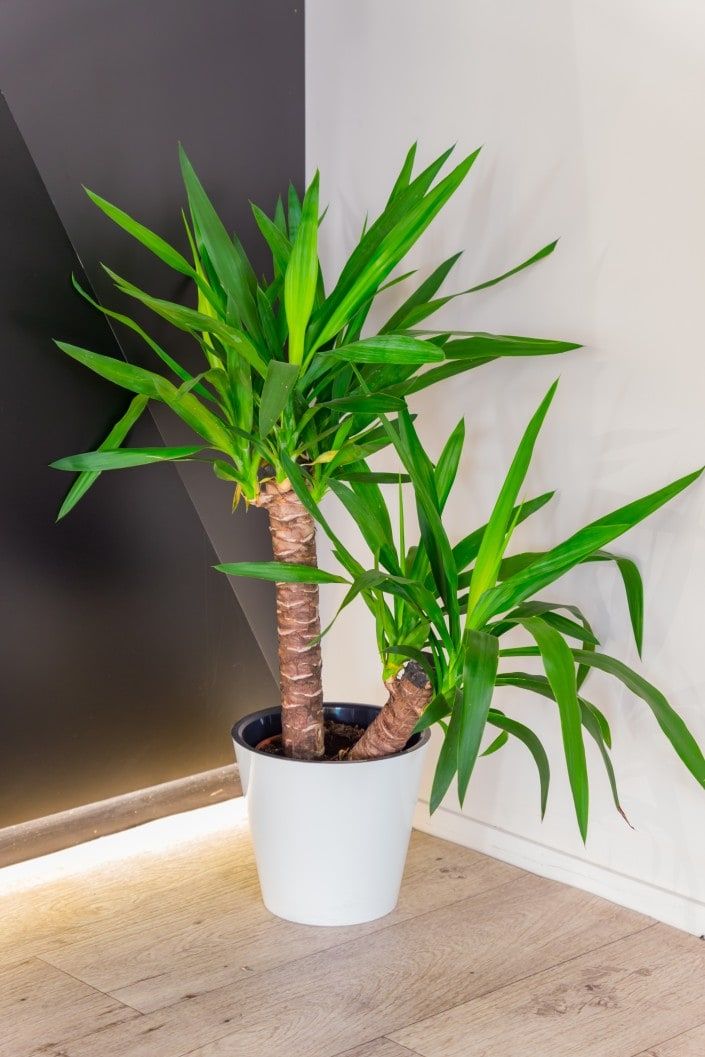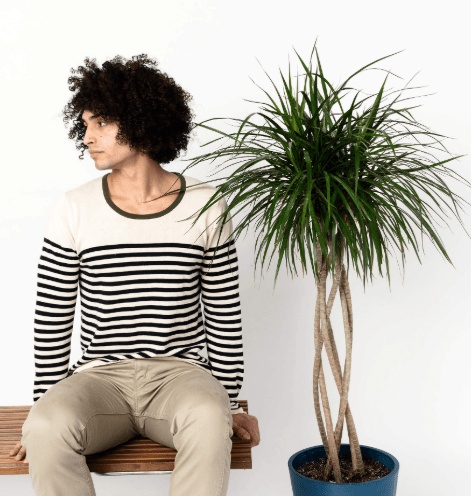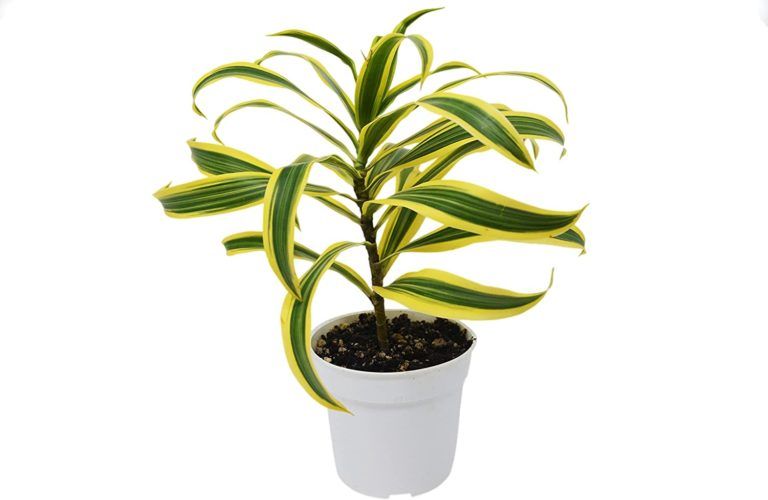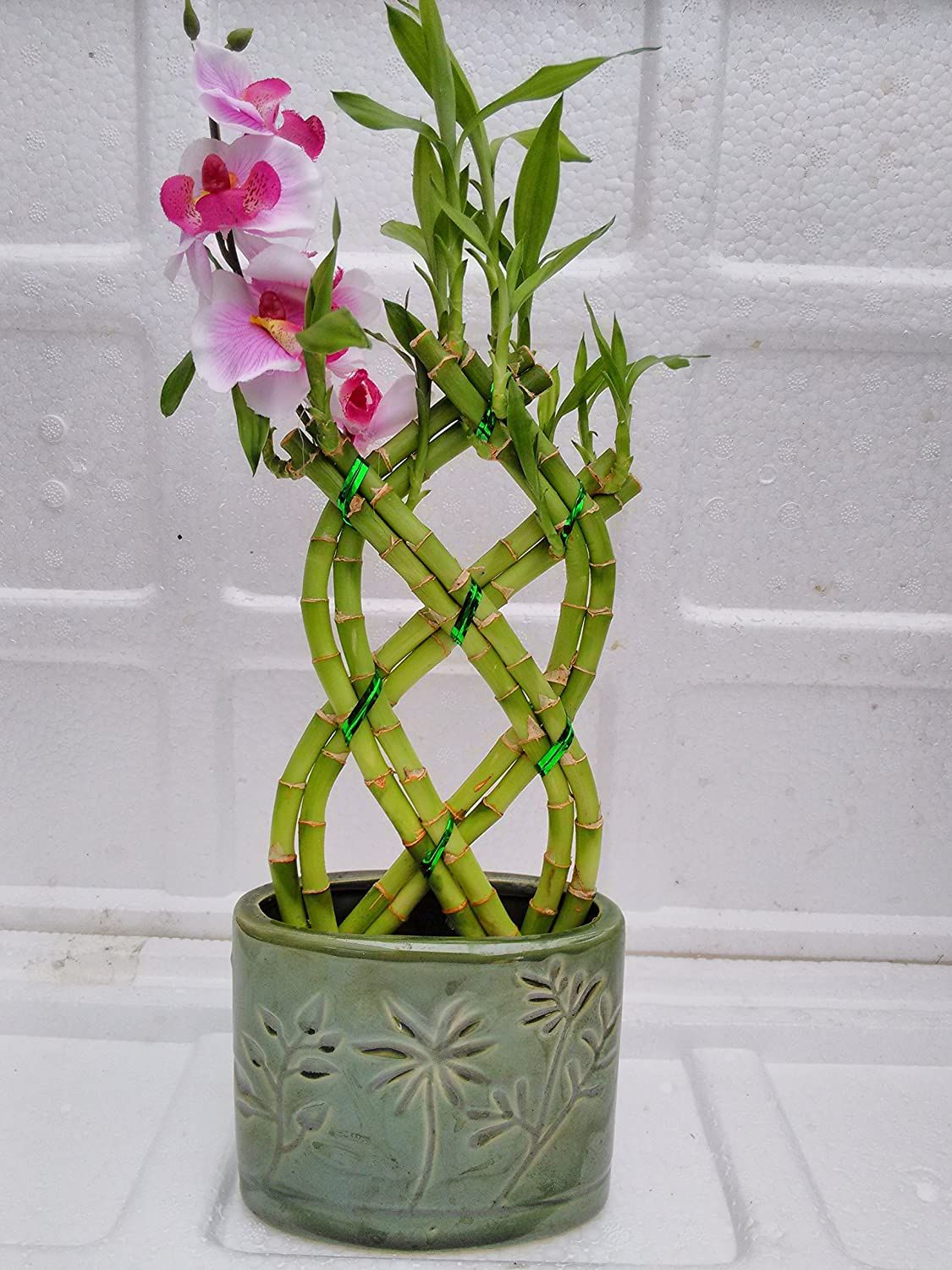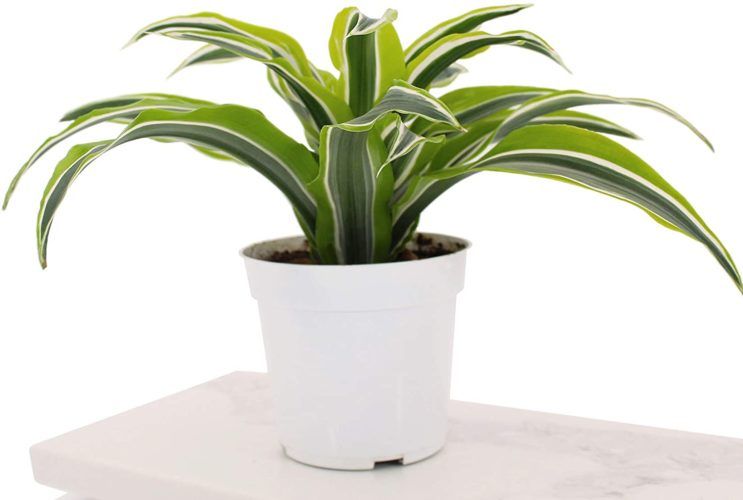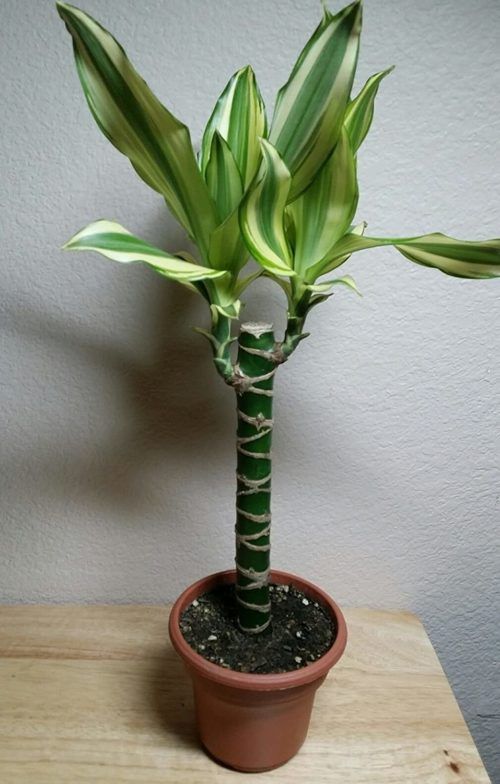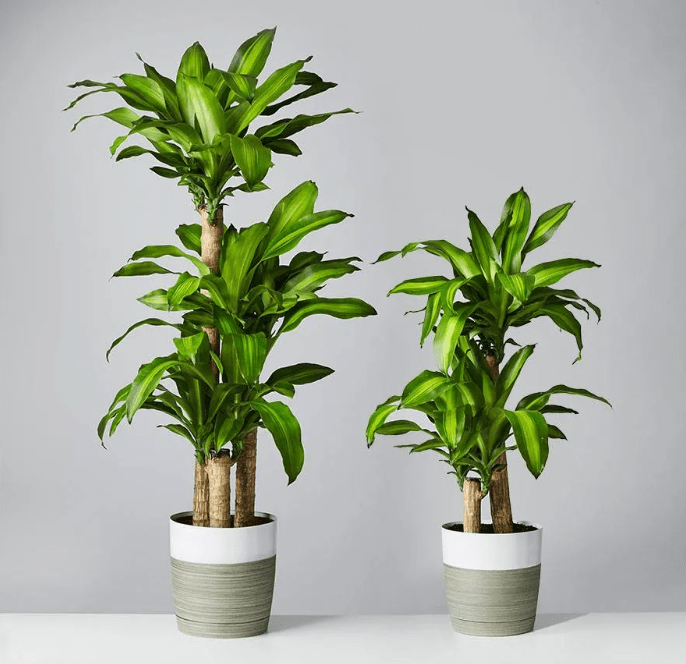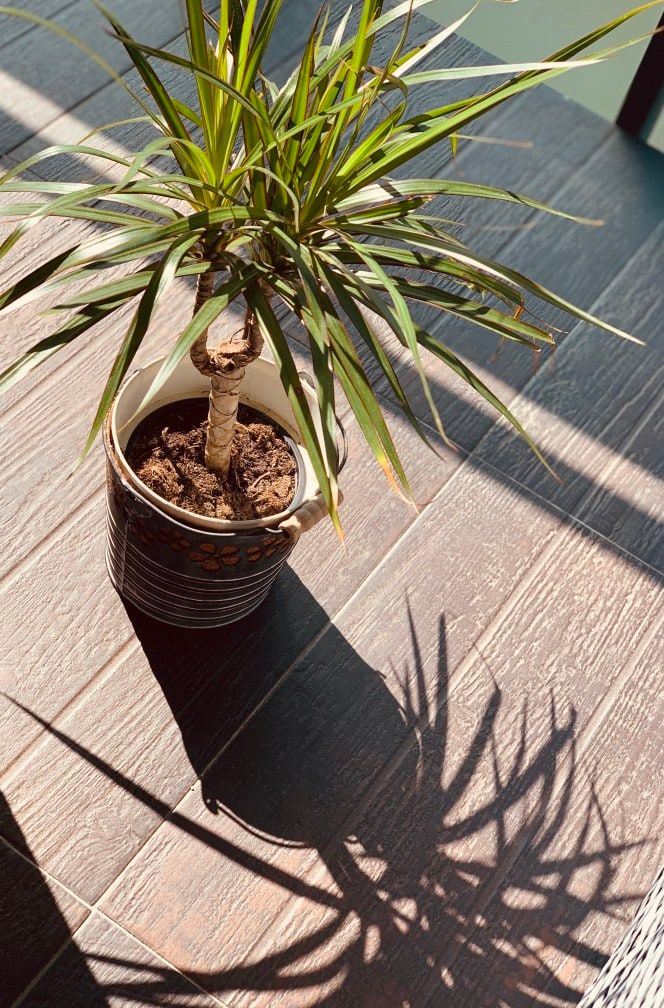Dracaena plants have a fascinating history! The plants today are mostly used to decorate the interiors of homes, but their blood-red resin was used centuries ago in toothpaste, dyes, and medicine.Aside from being mood-inflating, air-purifying wonders, dracaenas of every variety also just look really cool. Here we've gathered all the info you need to grow a healthy, robust dracaena indoors—everything from care requirements to dracaena varieties to common growing problems to where to buy your own dragon tree.
Dracaena Details
Dracaena spp.
AKA dragon tree, Janet Craig, song of India, D. marginata, D. fragrans
Light: Low to bright light, indirect
Water: Only when soil is dry 2-3 inches below surface
Temperature range: 70-85° F
Height: 18-72 inches indoors
Fertilizer: 20-20-20
Special care: Susceptible to root rot from overwatering, and to mealybugs and thrips. Toxic to pets, irritating to skin if exposed to prolonged contact with sap.
Dracaena Benefits
Dracaena is one of the best indoor houseplants for providing real physical and mental health benefits. Below are some of the incredible benefits you can reap from growing a dracaena plant indoors.
Purifies Air
Dracaena is one of the most powerful air purifying house plants out there effectively removing common household pollutants like formaldehyde, benzene, trichloroethylene, and carbon dioxide.
These pollutants, when left unchecked, can cause unpleasant side effects like headaches, respiratory issues, and anemia. Dracaena absorbs them through its roots and leaves, filters the pollutants out, and then pumps fresh oxygen into the air.
Enhances Brain Functioning
Having plants around, for whatever reason, makes people more attentive. A study by The Royal College of Agriculture in Cirencester, England found that students were far more focused in class, by as much as 70% compared to the control group, with plants around. Being more focused leads to improved cognitive functioning, concentration, and memory retention.
Makes You Happier
Just having plants around makes you feel happier. Having greenery inside has a positive impact on mood, brightening up indoor spaces. Successfully taking care of plants creates a sense of fulfillment that releases happy chemicals in your brain. When you take care of a plant you aren’t just taking care of it, but also your mental well-being.
Caring for Your Dracaena
Unless you are one of the blessed individuals with perfect weather who lives in USDA Plant Hardiness Zones 10 - 12, you will have to grow your dracaena plant indoors. That’s totally okay! Better than okay, actually. It's ideal, because this low-maintenance plant flourishes in indoor conditions. That is, as long as you follow the simple care instructions outlined below.
Water
Water the plant thoroughly, around once a week, but it really depends on your climate conditions. Always allow the soil to partially dry out between waterings but never allow it to completely dry out. To test this, stick your finger into the soil. If the first 1- 2 inches are dry, water your plant.
Make sure your container has good drainage and that water is not getting stuck in the soil because that can lead to root rot. Overwatering can also cause drooping and yellow leaves.
Only use purified water or tap water that has been left to sit out overnight to water your plant. Dracaenas are sensitive to the fluoride that is present in tap water and it can cause their leaves to turn brown or die.
Light
Dracaena plants like bright, indirect light. To achieve this place your plant on a windowsill with blinds, drapes, or light filtered in another way. While all dracaena varieties are low-light hardy, they perform best with a few hours of bright sunlight each day. Direct sun will result in schorched blade ends, while too little light could result in faded or curled leaves. If your dracaena can't get adequate lighting inside your home, it is a good idea to purchase a small grow lamp to supplement its daily exposure.
Humidity
Most dracaenas are from tropical areas, so of course they love humidity. They can make do with the natural humidity of indoor rooms, but prefer additional humidity to really flourish. To achieve this, you can place them near a humidifier or on a humidity tray. You can also gently mist them once a week with a spray bottle.
Drip and Humidity Tray with Washed River Rocks
Designed specifically to maintain moisture levels. As the excess water in the tray evaporates, your tree will be surrounded by the humidity, and it’ll love you for it. Each tray includes River Rocks, which are both functional and add to the general aesthetic of your indoor garden. The tray and rocks can be used for Bonsai, Cacti, Succulents, Tropical Flowering Plants, indoor trees or any other house plant..
Soil
Dracaenas thrive in a well-drained, loamy potting mix with plenty of organic materials. It’s a good idea to mix in some compost or peat moss before planting your dracaenas.
The pot your dragon tree is planted in should have plenty of room for the dracaena, which have notoriously extensive root systems. Your container should also have adequate drainage holes so water doesn’t get trapped in their soil.
Fertilizer
Dracaenas only need to be fertilized once or twice per growing season. They have no specific fertilizer preference, but it’s best to use one that is controlled-release and specifically designed for houseplants.
Repotting
You will only need to repot your dragon plant every few years; they are extremely slow growers. When you repot, make sure to use new potting soil, give your dracaena plenty of new room to grow into, and let it have a bit of extra sun for a few days afterward. Resist the urge to overwater when repotting. Wait five to seven days before watering your dracaena in its new pot and soil, or it may experience drooping or yellowing leaves.
Dracaena Pruning
Prune your dracaena plant during the growing season in the spring and summer. Use clean, sharp pruners to prune, because nasty, dull ones can lead to the plant contracting diseases. Cut the stalks at an angle, doing your best to make even cuts. Remove damaged and dying canes that have turned brown or become weak. Dracaenas aren’t particularly sensitive to pruning, so also feel free to reduce the plant’s height. Anywhere you make a cut, new canes will emerge.
Dracaena Propagation
Love your dracaena so much you want another? No need to go buy one, you can easily propagate dracaenas from cuttings. You can take cuttings from the top of the plant or from stem cuttings. If you want to use top cuttings, cut the dracaena with pruners along the plant’s leaf line, severing a piece that includes several plant stem nodes. If you are taking stem cuttings cut a large portion of the stem, I’m talking segments that are around 8 inches long, that have a few leaf nodes on them.
Brush the bottom of the cuttings with rooting hormone. This step is optional, but it greatly increases your chances for successful propagation. Those chances are already pretty high because dracaena plants are very easy to propagate, but the rootoing hormone does make the process faster and more reliable.
Place the bottom of your cuttings in moist soil or a container of clean water. Then, place the container in a warm spot with lots of indirect sunlight. Once the cuttings develop roots you can transplant them to a bigger, potting mix-filled, container. Voila! You have new dracaena plants!
Dracaena Varieties
There are countless dracaena varieties to choose from. Below are some of the best varieties that you will commonly find in garden stores and online.
Madagascar Dragon Tree
This dracaena variety is properly known as the dracaena marginata. Of course, Madagascar dragon tree is much more fun, and it suits this enchanting, whimsical plant better. This variety is an evergreen tree that can grow to be 15 feet tall outside. For the people who just imagined a tree growing through their ceiling, don’t worry, it’s much shorter when grown indoors. This variety has unusual purplish-red leaves and a curving trunk. Also, it’s one of the most resilient dracaena varieties.
Extra-Large Potted Dracaena Marginata
This Dracaena Marginata variety is tall with an open braid weave consisting of 4 canes or stems. Its thin, green leaves banded in red or pink on top of slender stems make a delicate, slight abstract silhouette. As it grows, it maintains its upright appearance making it perfect for blank walls, spots behind furniture or narrow corners.
Song of India
The dracaena reflexa is one of the most popular dracaena varieties and it’s no wonder why. It has narrow, long leaves with eye-catching yellow stripes. This gorgeous plant thrives in partially shaded environments, indoors or outdoors.
Live Potted Song of India Dracaena
The Dracaena Plant has narrow smooth leaves with a bright yellow color. This hardy plant has yellow and green leaves that make for a great addition to any area. This Dracaena Song of India in a 4-inch pot is great for larger assortments or areas in your home or office near windows. Dracaenas compose of a large group of popular foliage plants. Most grow strongly upright with long variegated leaves with a large array of colors. Dracaenas grow well at average room temperatures and like ample light.
Lucky Bamboo
Lucky bamboo, or dracaena sanderiana, is the most whimsical dracaena variety, not only having an enchanting look with its playful woven bamboo but also famously bringing luck to the households that it occupies. It’s slow grower, typically only reaching a foot tall or so, but it’s compact size and resilience makes it an excellent house plant.
Live 8 Braided Style Lucky Bamboo Plant Arrangement
This Dracaena resembles bamboo, but it isn't a true bamboo. 'Lucky Bamboo' performs well in containers with bright but indirect light. The bright green leaves are spaced out on the eight upright stems, which have been trained into a braided shape here.
Warneckii
Dracaena deremensis is an award-winning dracaena variety with long, pointed leaves that normally have stripes in shades of cream, green, and yellow. It enjoys bright, indirect sunlight and is one of the best dracaenas for air purification.
Dracaena Warneckii Surprise (4-inch Pot)
The striated Dracaena Warneckii plant can live happily indoors for years, even in lower light conditions (with reduced watering). This and all dracaena varieties are prone to root rot if overwatered, especially in lower light. This one comes in a 4-inch grower's pot, but with time and care, a Warneckii can grow as tall as six feet or more indoors.
Corn Plant
Dracaena fragrans is one of the taller dracaena varieties, but it will take some time to reach that height, growing very slowly. It’s low maintenance, resilient, and the least expensive dracaena. That low cost doesn’t reflect this plant’s quality though, because with thick, wooden cans and long leaves it provides gorgeous greenery to your indoor spaces.
6-inch potted Dracaena Fragrans Corn Plant
Although Dracaena plants seem to thrive on neglect, they have some care requirements to help them thrive. The most crucial factors when it comes to caring for corn plants is to water them properly and get the lighting right. This corn plant is potted in a 6-inch grower's pot and shipped with well-draining soil.
Dracaena massangeana
Known as the Mass Cane Plant, this dracaena boasts broader, less rigid leaves than D. marginata, but with the same height and general care requirements.
Potted Mass Cane Plant
Show the mass cane plant the love it deserves, and it’ll show you its flowers... under the right growing conditions. Beautiful and easy to care for - this one’s popularity is mass-ive. Plant Perk: This slow-growing beauty is one of the most effective plants at removing room toxins that can cause ear, nose and throat irritation.
Common Dracaena Growing Questions
Still confused about how to make your dracaena plant flourish? No worries, below are some of the most common dracaena growing questions.
What is the Growth Rate of Dracaenas?
Dracaenas are very slow growers, but that doesn’t mean they don’t grow a lot. In fact, outdoors in warmer climates, they can grow to heights as tall as 20 feet. Of course, indoors they are typically kept below 6 feet by growing conditions and frequent pruning. Nevertheless, if you have unusually high ceilings, you can probably squeeze a couple more feet out of this plant indoors, especially if it has ample light and fertilizer during the spring and summer.
What are Common Dracaena Pests and Diseases?
Dracaenas are pretty pest and disease-resistant, but that doesn’t mean they never have problems. Like every other house plant, dracaenas can suffer for root rot if they are overwatered or their pot doesn’t have adequate drainage holes. If your lant contracts root rot, immediately repot it, cut away the diseased sections, and pray to the plant gods that will be enough to save it.
Pest-wise, dracaenas can attract mealybugs, spider mites, and scale. If your plant is attacked by pests, use an insecticide to get rid of them. Serious attacks when not treated can have consequences as dire as death.
Are Dracaenas Toxic?
Dracaenas are toxic to cats and dogs. Do not let your pets eat your plant. Poisoning symptoms include vomiting, depression, dilated pupils, weight loss, lack of appetite, and hypersalivation. If you think your pet has eaten or chewed your dracaena, seek professional care. In other words, if you have cats and dogs who like to nibble, this may not be the plant for you.
Conclusion
Dracaenas are one of the best statement plants you can grow indoors with tons of benefits like adding gorgeous greenery to your indoor spaces, being notably low-maintenance, and having myriad health benefits when grown indoors.
I hope you enjoyed this guide! If you did, be sure to share it and comment below with any dracaena growing questions!

